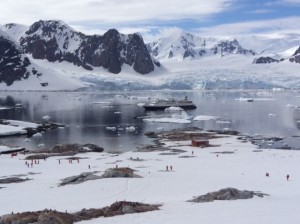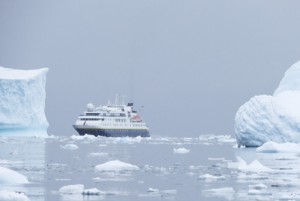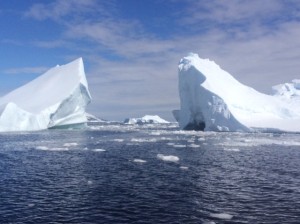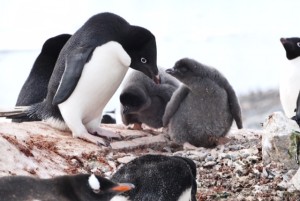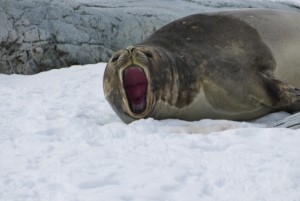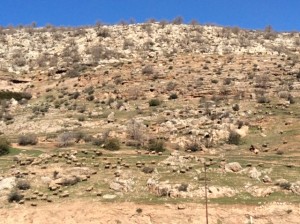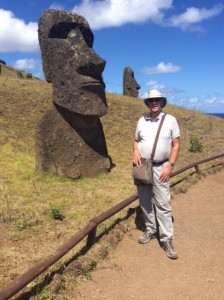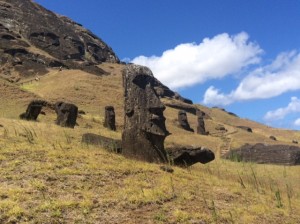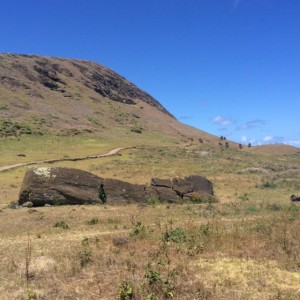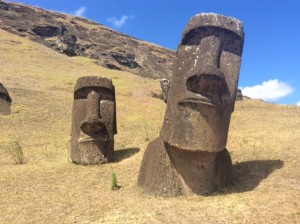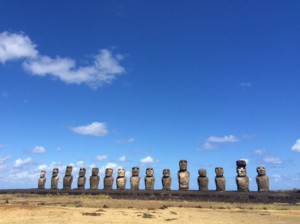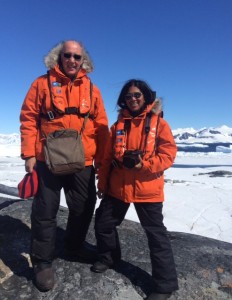ANTARCTICA AND EASTER ISLAND – CREATION 5.5
Creation and the Ego of God
It was noon on day 6 and according to Genesis “God saw that it was good.”
Almost as an afterthought God said “Let us make mankind in our image, in our likeness…..So God created mankind in his own image….”
What if God would have reconsidered whether a species created in God’s image would be a good thing? When we consider the destructive outcome of our species we need to ask whether God got it wrong or allowed his/her ego to get in the way?
I had the privilege of visiting Antarctica in early January together with my daughter and with excellent weather we experienced Antarctica in all its magnificence. This was followed by a sobering visit to Easter Island, the most remote inhabited piece of land on earth. If Charles Dickens had been my companion he might have produced another book titled “Tale of two Planets.”
Antarctica remains a close approximation of its primordial past with giant whales, ice floes full of seals anxiously eying the fins of killer whales, penguins taking advantage of the first exposed rock to lay eggs before the next winter arrives. We were followed by the incredible albatross which never seems to touch the earth. The great glaciers produce uncounted icebergs and the sea below teems with krill, the staple of Antarctic life.
The isolation, climate plus the stormy 700 km wide Drake Passage with reputedly the roughest seas on the planet kept the human species off the continent preserving a vision of creation as it was after 5.5 days. Almost.
Whalers reached Antarctic waters in the 19th century and managed to reduce the regional population of blue whales – the largest mammal to have ever existed – from a population of 250,000 to around 2,000 before the mind of man – the one created in the image of God – decided to call a moratorium. Blue whales each eat 4 tons of krill daily or collectively a million tons per day when they were at full strength. The absence of the large whales increased the food supply for other species such as seals and penguins and their population exploded. However the krill reproduces and thrives under sea ice and with a warming climate the total area of sea ice has declined and with it the quantity of krill.
To really complicate matters the Norwegian salmon industry – the product we buy at our grocery store – invested along the coast of Chile and quickly fished out the local anchovy as fish food. Most other protein supplies produce a white salmon which is not appreciated by the market but the krill will produce a pink salmon. Now the salmon farming industry plus the reduction of sea ice is threatening the delicate balance of life in the last place on the planet that looks somewhat like it emerged from creation.
The Antarctic is ecologically protected from human or industrial interference by the Antarctic Treaty which came into force in 1961 – a remarkable achievement considering it was in the middle of the Cold War. The original signatories have expanded from 12 to a current 52. The Treaty covers important subjects such as banning militarization, no nuclear activity, shared science and other important aspects. The Treaty has been remarkably effective but like anything else there may be loopholes. Article 6 says that “The Treaty applies to all land and ice shelves south of 60 degrees but not to the seas.” Well, guess where most of the life in Antarctica lives – in the sea and from the sea. The Norwegians quit hunting whales effectively when they ran out of whales and Japan pretended to pursue scientific research (hunting whales) until this past year when they were finally shamed into stopping the practice. With an eye to the resources many nations are establishing ‘research’ installations to position themselves for a possibly different future.
Who would think that catching krill to feed salmon in the fjords of Chile would threaten Antarctica – but it is the absolute base of the entire food chain in Antarctica. Are you prepared to start ordering white salmon? That is what it might take to save Antarctica!
The point is that Antarctica reveals how absolutely fragile the ecosystem of the planet is. The rest of mankind lives in the parts of the planet with greater diversity and ability to absorb shocks but it simply means that we need to demonstrate greater greed or commit more senseless actions for damage to accumulate and become visible.
In February I travelled to Kurdistan and through the hills adjacent to the ancient Nineveh Plains – the reputed home of the Garden of Eden and the biblical epitome of the fertility of the created planet. The hills these days are ribbons of rock with bits of grass fighting to survive -and that little is hunted daily by sheep and goats. Historians tell us that these hills were green and fertile before humans arrived and began abusing the land with their domesticated animals.
Antarctica is not some idyllic place that represents creation as God intended. Antarctica is a demonstration of what the earth might look like or function like if humans stayed out of the way. Each climate and bit of geography would have a different solution – from the coral reef to the rain forest – but Antarctica with its limited life forms represents the purity of the balance of nature. The balance of life forms may change and adjust over time – but they do not collectively destroy their environment and disappear.
As humanity tampers with the balance of nature we may not be playing with fire but certainly are playing with water. The Greenland ice sheet is massive and if it all melted would raise the oceans by something like 7.2 meters. Antarctica on the other hand has so much ice that if it melted it would raise the oceans by 58 meters. Now consider where you live, or the coastlines of your country and consider what an ocean rise of 65 meters or 200 feet might do to the world. Beachfront property might emerge in interesting places assuming any of us lived to appreciate that.
Now lets take a look at Easter Island. This island is considered to be the inhabited place that is furthest from any other inhabited place on earth. It lies in a reasonably temperate climate zone but was missed by the ocean currents that carried the essential plankton and the corresponding richness of sea life. Given its isolation a limited number of tree species and other plants arrived on the island, several non-flying birds adapted but all mammals were missing. Easter Island was green and thriving but was like a miniature planet with a very small fraction of the life forms that developed on the rest of the planet.
Around 1500 years ago a group of humans arrived, possibly by accident, but stayed and created a miniature civilization. DNA, visual appearance and cultural values suggest they were part of the Polynesian movement that populated the Pacific islands. There is little evidence of communication between this original group and its place of origin and no evidence of further arrivals.
Easter Island is a real-life experiment as to how the human species adapts to the limitations of its physical endowment. Does society recognize there are limitations to the carrying capacity of the island and manage population? Do they kill the last of the flightless birds rather than learn to breed them for food? Do they use their energies to build terraces on the volcanic slopes to increase the ability of the land to produce food or is that same human energy engaged in creating massive stone heads to acknowledge ancestors and to compete for prestige with the clan in the next cove?
I had the privilege of spending a day with Sergio Rapu, anthropologist and archeologist, former Governor and one of the few survivors of the original population. Research suggests that the population of Easter Island reached 20,000 about 500 years ago and this population placed so much pressure on the resources of the island that the society collapsed into warfare and then began a serious decline. The flightless birds became extinct, when the last tree was cut down it became impossible to build boats for fishing or consider contact with distant places. When Europeans made contact in 1722 the society was already in a state of collapse. Slave-trading, the introduction of disease, large scale sheep farming and greed reduced the native population to 100 early in the 20th century.
Easter Island is a tragedy but the collapse occurred or was well underway when the outside world arrived. Islanders practiced a form of ancestor worship represented by the giant stone heads or ‘moai’ that have fascinated the world. The giant stone heads may not have contributed much to the success of Easter Island society –but it has given the island a unique heritage that makes it a global tourist destination today – the only resource that supports the current population.
Today 8 billion people populate and pollute an increasingly crowded world. The planet has phenomenal resources but the extreme climates and locations of Antarctica and Easter Island suggest that it is possible to challenge the capacity of parts of our planet and quite possibly the entire planet – at least in terms of its ability to support the species ‘created in the image of God’.
When we observe our collective actions in how we treat our fragile planet, mess around with the climate, accept various forms of expression and oppression that forget we all share one creation and one Creator, one can easily become discouraged.
Returning to the original question – did God really create the human species in his own image? Many believers like to say that God knows all in advance – it is hard to imagine a God who would create a planet and populate it with a group that are well on the way to its destruction and then state that we are created in the image of God. I like to think that this universe has a purpose – and we call that purpose ‘God’. The human species has the unique ability to not only respond to the universe and creation – but we have the ability and intelligence to participate in that creation. We can collectively make the planet a space and a place for everyone and make it better – or we can participate in its destruction – at least as a habitable home for us.
 We exist with the unique ability to create and destroy – and in that sense we are created ‘in the image of God’. Mankind has achieved a great deal – but the outcome of our collective existence is somewhat in doubt.
We exist with the unique ability to create and destroy – and in that sense we are created ‘in the image of God’. Mankind has achieved a great deal – but the outcome of our collective existence is somewhat in doubt.


